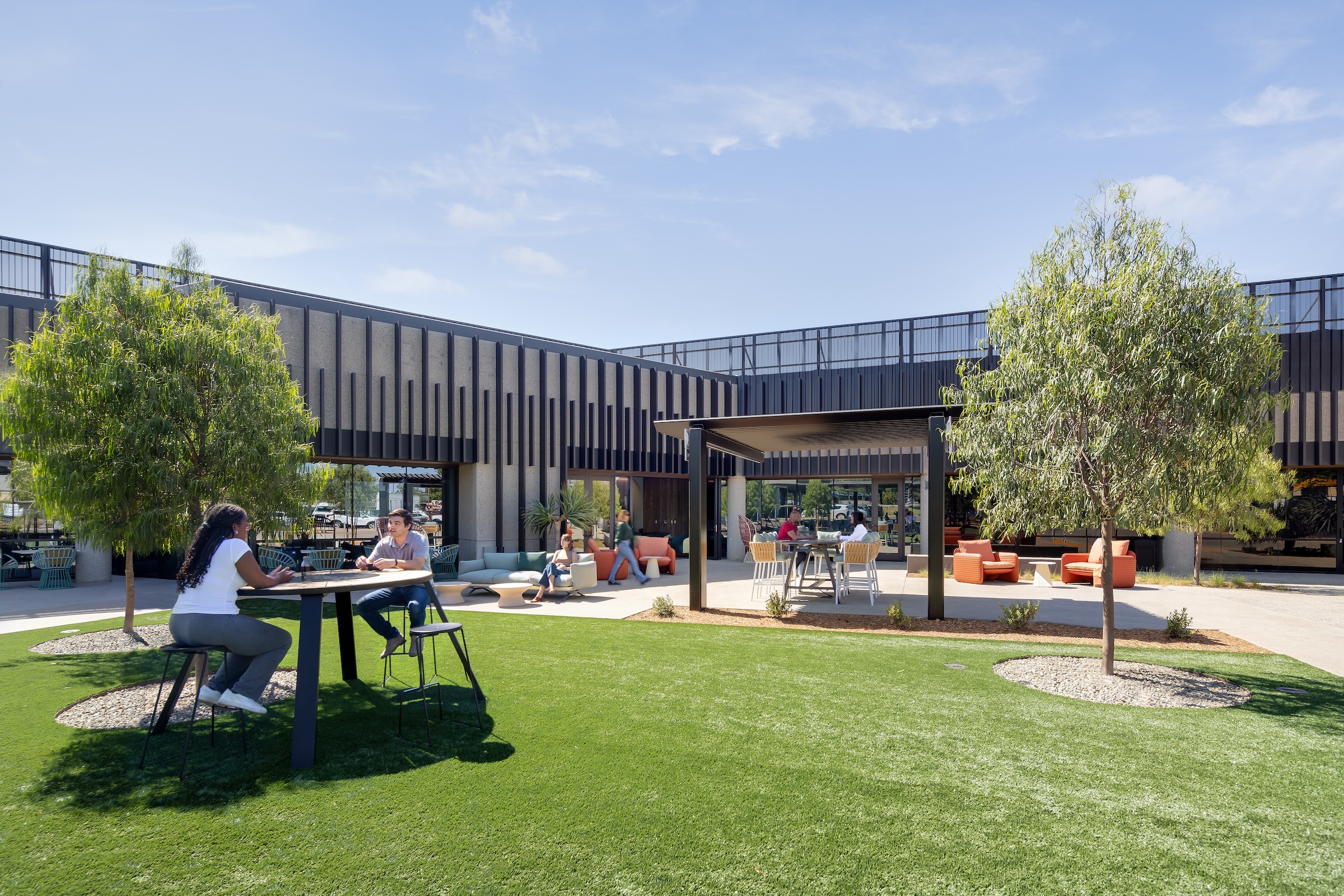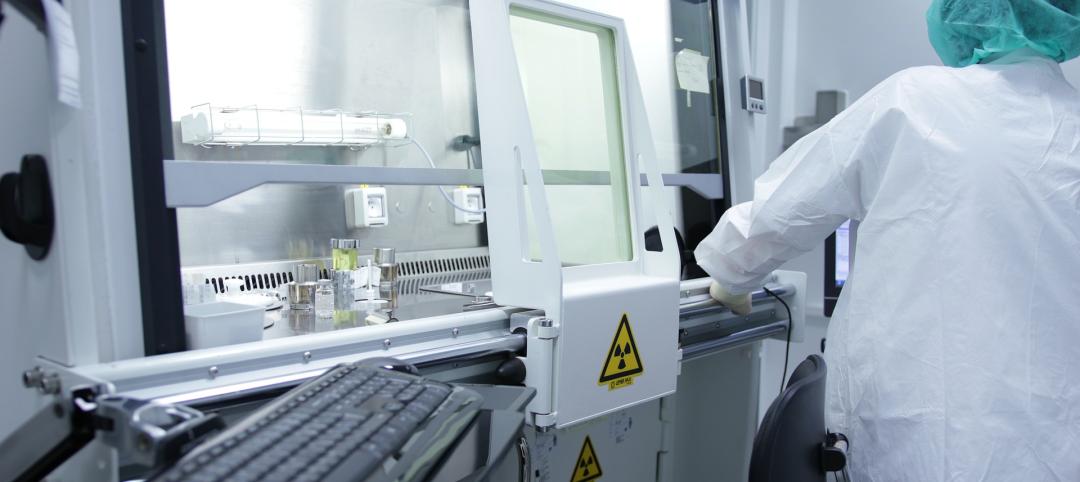The life sciences sector is transforming the real estate market, driven by breakthroughs in biotechnology, pharmaceuticals and medical research. CBRE projects that 21.3 million sf of life sciences real estate will be completed this year, a 65% increase from 13.9 million sf in 2023. This rapid growth has intensified competition for attracting tenants, particularly those seeking to secure top R&D talent. According to CBRE’s U.S. Life Sciences Talent Trends 2024 report, talent acquisition challenges are expected to persist in the industry.
To distinguish their properties, developers are partnering with architectural and design firms to reimagine life sciences facilities as vibrant, welcoming destinations. By emphasizing four key elements—wellness, collaboration, biophilic design, and community integration—they are setting their properties apart. By integrating state-of-the-art facilities with unexpected public amenities, such as breweries and outdoor “living rooms,” these developments foster a more holistic environment. This evolution not only redefines how life sciences companies engage with their communities but also demonstrates how thoughtful lab design can drive innovation, paving the way for a new era in campus development.
A Study in Wellness in Life Science Facilities
Onsite gyms were just the beginning. Life sciences campuses are embracing wellness in more holistic ways to enhance productivity and job satisfaction for the talented individuals typically confined to lab benches. Longfellow Real Estate Partners, developer of the 17-acre Centerpark Labs in San Diego, worked with interdisciplinary design firms HGA and FPBA to create versatile spaces, including indoor-outdoor seating areas, lunch spaces, and a hybrid fitness area with turf and ample space for various athletic activities.
Additionally, Cell Signaling Technology (CST), a leading provider of antibodies, kits and services, will provide employees and visitors with opportunities to connect to nature in the adjacent state park, The Monoliths, supported by a network of walking trails, overlooks, and bicycle facilities on its new research and innovation campus in Manchester-by-the-Sea, Massachusetts.
In the competitive life sciences field, talent is increasingly attracted to workplaces that prioritize well-being and work-life balance which help mitigate burnout. Thoughtfully-designed spaces that enable employees to recharge mentally and physically enhance focus, creativity and collaboration—key drivers of breakthroughs in R&D.
Architects of Insight
Lab spaces were once characterized by isolated environments, designed for scientific functionality above all else. Today, flexibility and collaboration take center stage, with architects designing spaces that remove physical barriers to foster cross-disciplinary communication and the exchange of ideas. Design teams for projects at Centerpark Labs and Cell Signaling Technology have embraced this approach by connecting office and lab spaces with glass walls, fostering transparency and interaction while maintaining workflow. Additionally, open, flexible layouts, enable teams to easily reconfigure spaces as their research evolves, enhancing adaptability in this dynamic field.
Research in Full Bloom
Biophilic design, a popular trend in the office sector, is still a relatively new concept for research facilities. Cell Signaling Technology’s new campus, located on the site of an abandoned granite quarry, will utilize the natural cliff walls and varying elevations to create visual interest, active courtyards and al fresco lounge areas. Centerpark Labs is also incorporating outdoor terraces into its buildings, enabling employees to enjoy San Diego’s warm climate—a feature more commonly seen in Big Tech campuses and modern suburban office design than in scientific facilities. Durham ID, a 1.7 million-sf mixed-use campus developed by Longfellow, directly connects lab and office employees to Morris Green Park, which the firm developed within downtown Durham, N.C.
Life sciences companies are increasingly demonstrating their growing commitment to environmental stewardship. For example, Cell Signaling Technology’s new R&D campus is designed to eliminate the use of fossil fuels and achieve net-zero emissions—a dramatic transformation from its previous life as an environmentally depleted quarry site. By using sustainable materials, energy-efficient practices and preserving local flora, life sciences campuses not only contribute to a healthier planet while creating inviting spaces that attract eco-conscious talent. This approach reinforces company values and fosters a stronger connection between employees and their environment.
Life science campuses as destinations for the community
By integrating public-facing amenities such as restaurants, retail spaces and residential elements, life sciences facilities are becoming community-centric destinations that offer significant value for tenants and the local economy. Durham ID and Centerpark Labs have introduced features like onsite taquerias, coffee shops, yoga studios, and even a brewery to encourage public interaction and increase foot traffic. Durham ID’s mixed-use design, which integrates residential units, offices, retail and lab spaces, further stimulates local engagement, creating a strong sense of community for those who live, work and play in the area.
Wellbeing Transcends Industries
The transformation of life sciences campuses from isolated laboratories to vibrant hubs of activity reflects the growing importance of wellness and collaboration in today’s workplaces, regardless of the field. By creating innovative, flexible spaces that prioritize collaboration and well-being, architecture firms are meeting current needs while anticipating future industry demands. Their ability to create environments that foster innovation, sustainability, and community engagement will be essential in attracting and retaining top talent.
In this rapidly evolving landscape, the partnership between life sciences companies and architecture firms will be essential in creating vibrant hubs for research and discovery that drive innovation and progress. These next-generation campuses offer much more than functional lab spaces; they create dynamic environments where science, community and creativity converge.
Related Stories
Laboratories | Sep 20, 2023
Life sciences construction market is poised for a comeback: JLL
The life sciences commercial real estate market has undergone a reset this year but is well positioned to be the comeback kid as capital sources grow more confident and green shoots emerge, according to JLL’s 2023 Life Sciences Industry and Real Estate Perspective.
Laboratories | Aug 24, 2023
Net-zero carbon science center breaks ground in Canada
Designed by Diamond Schmitt, the new Atlantic Science Enterprise Centre (ASEC) will provide federal scientists and partners with state-of-the-art space and equipment to collaborate on research opportunities.
Giants 400 | Aug 22, 2023
Top 115 Architecture Engineering Firms for 2023
Stantec, HDR, Page, HOK, and Arcadis North America top the rankings of the nation's largest architecture engineering (AE) firms for nonresidential building and multifamily housing work, as reported in Building Design+Construction's 2023 Giants 400 Report.
Giants 400 | Aug 22, 2023
2023 Giants 400 Report: Ranking the nation's largest architecture, engineering, and construction firms
A record 552 AEC firms submitted data for BD+C's 2023 Giants 400 Report. The final report includes 137 rankings across 25 building sectors and specialty categories.
Giants 400 | Aug 22, 2023
Top 175 Architecture Firms for 2023
Gensler, HKS, Perkins&Will, Corgan, and Perkins Eastman top the rankings of the nation's largest architecture firms for nonresidential building and multifamily housing work, as reported in Building Design+Construction's 2023 Giants 400 Report.
University Buildings | Aug 7, 2023
Eight-story Vancouver Community College building dedicated to clean energy, electric vehicle education
The Centre for Clean Energy and Automotive Innovation, to be designed by Stantec, will house classrooms, labs, a library and learning center, an Indigenous gathering space, administrative offices, and multiple collaborative learning spaces.
Laboratories | Jul 10, 2023
U.S. Department of Agriculture opens nation’s first biosafety level 4 containment facility for animal disease research
Replacing a seven-decade-old animal disease center, the National Bio and Agro-Defense Facility includes the nation’s first facility with biosafety containment capable of housing large livestock.
Laboratories | Jun 23, 2023
A New Jersey development represents the state’s largest-ever investment in life sciences and medical education
In New Brunswick, N.J., a life sciences development that’s now underway aims to bring together academics and researchers to work, learn, and experiment under one roof. HELIX Health + Life Science Exchange is an innovation district under development on a four-acre downtown site. At $731 million, HELIX, which will be built in three phases, represents New Jersey’s largest-ever investment in life sciences and medical education, according to a press statement.
University Buildings | May 17, 2023
New UC Irvine health sciences building supports aim to become national model for integrative health
The new College of Health Sciences Building and Nursing & Health Sciences Hall at the University of California Irvine supports the institution’s goal of becoming a national model for integrative health. The new 211,660-sf facility houses nursing, medical doctorate, pharmacy, philosophy, and public health programs in a single building.
Sustainability | May 11, 2023
Let's build toward a circular economy
Eric Corey Freed, Director of Sustainability, CannonDesign, discusses the values of well-designed, regenerative buildings.

















